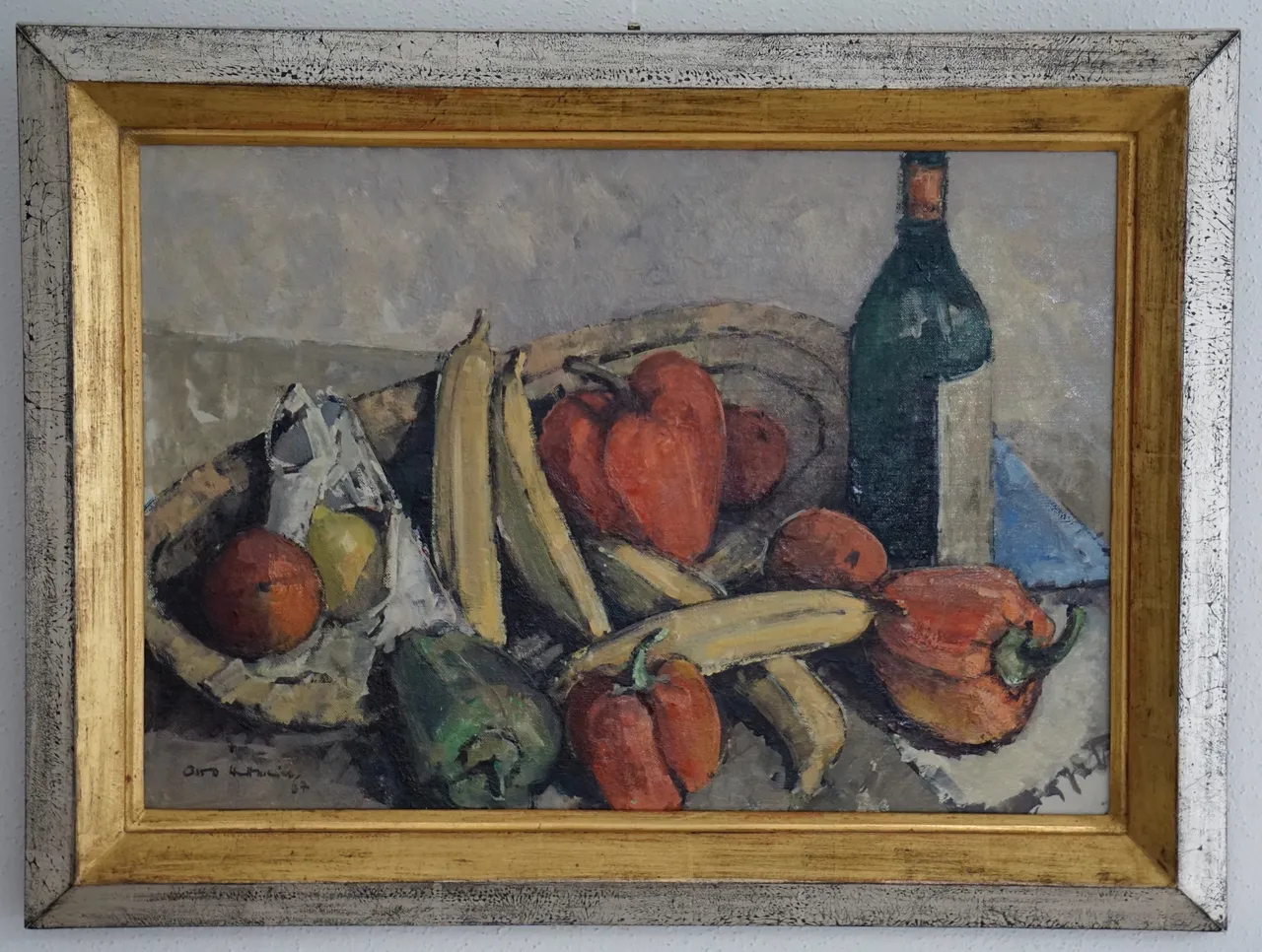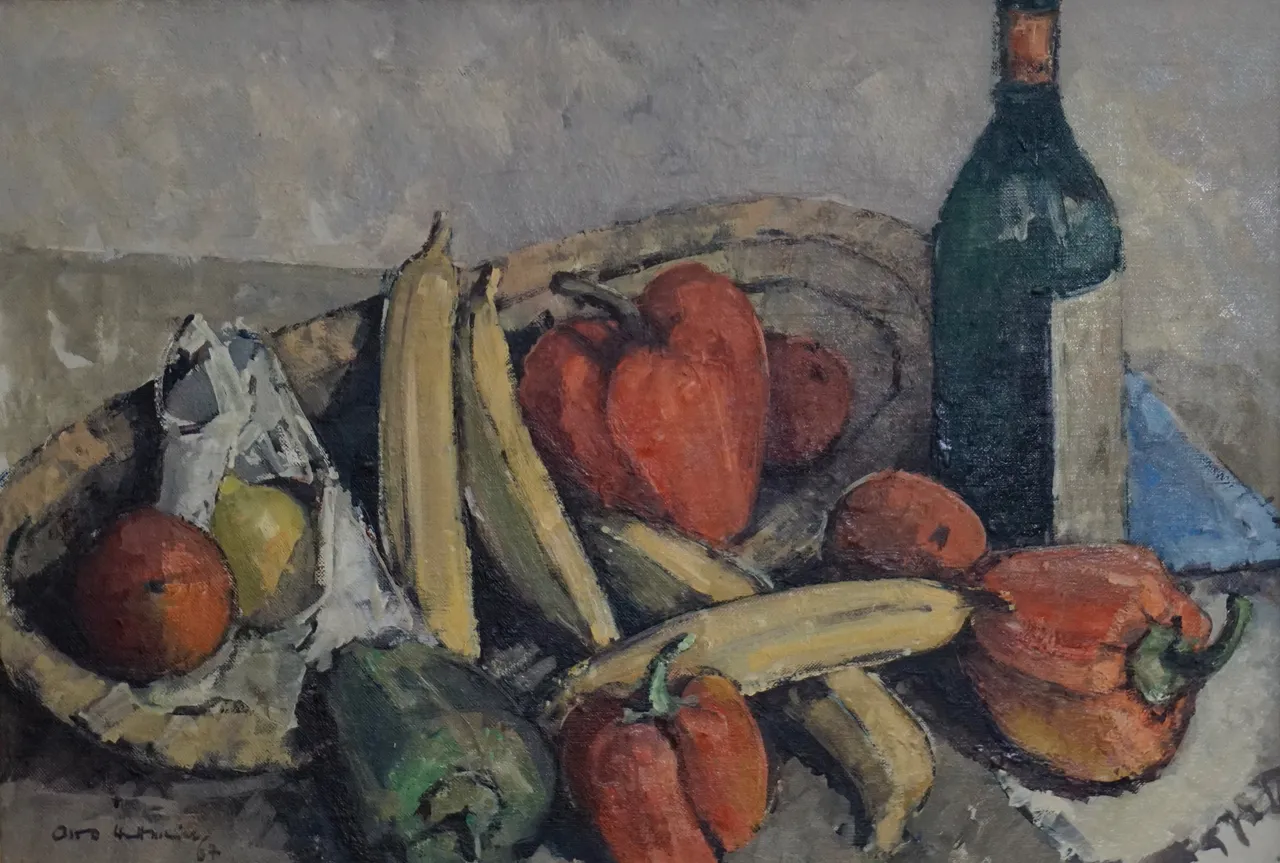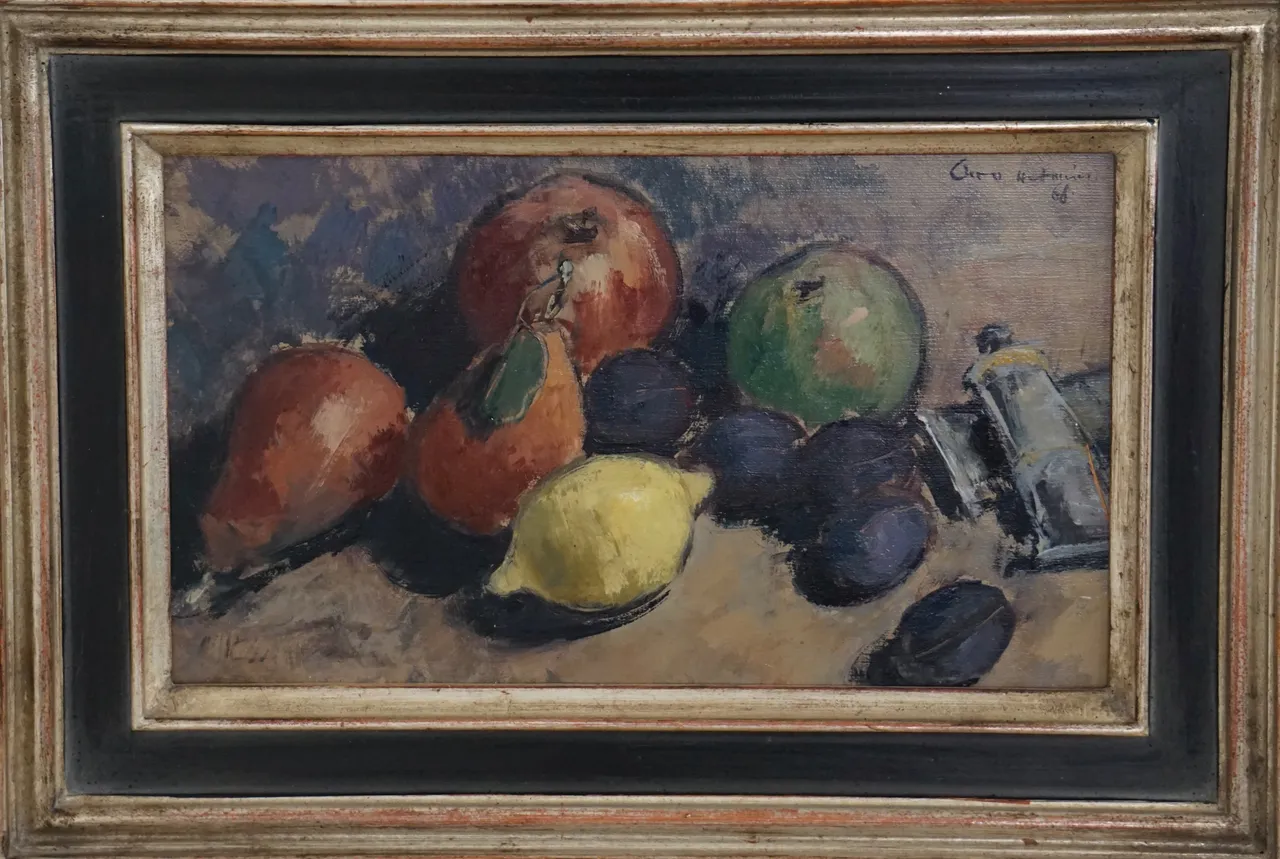Hey dear Hive friends, first of all I hope that you had a weekend which was full of positive experiences and also a great start to the new week! In this article, I would like to talk about art history and hope you can expand your knowledge a little.

Here you can see pictures of two works of art and both of them were painted with oil and the artist is the painter Otto Hellmeier (1908 - 1996). These works are about presenting still lifes which also describes a genre in art that has concentrated on painting of lifeless objects from nature and good examples are fruits, vegetables, baked goods, flowers or other objects of everyday life. Other objects such as musical instruments and tableware were also often depicted and often the tendency to the occult was also integrated into the works and you can often find paintings in which skulls are depicted. It is of great importance to paint immovable objects and for this the artist usually uses strong colors as well as the right stylistic devices and it also depends on the correct arrangement of the objects and through different colors the objects create their very own impression on the viewer. In history, still life is already very deeply anchored and already in ancient times there are traces from ancient Egypt, Rome or Greece where it was about painting lifeless objects and it was then rather referred to as painting of decorations and it should still take some time until a separate genre should develop from it. In ancient times, motifs often appeared on ceramics or murals and in the Middle Ages it also became increasingly popular among artists and more and more painters began to concentrate on it and some formative artists of the late Middle Ages such as the Dutch painter Jan van Eyck (1390 - 1441) concentrated on it.

In the Netherlands also developed between the 17th and the 18th century this genre and the term was derived from the words still leven at that time and the creation of its own genre led to the fact that the popularity grew more and more and numerous new artists came who began to devote themselves to this topic. Even before that, among other names still lifes were already painted and the division definitely had a great influence on the independent development and in the 19th century it came to a heyday and the epochs of that time had a great influence on it and so it was strongly influenced by Impressionism and the use of strong or bright colors for painting still lifes enjoyed great popularity for a few decades. All different currents also had a great influence on the whole topic and different artists revolutionized it further and further and came in addition to the fact that many new styles emerged and the art in the present has also changed it greatly. Often it was about expressing symbolism of artists and there was even a subcategory that only focused on it and the artist could express messages very specifically with different objects, colors or shapes and depending on the artist, still lifes can be very different. Due to the different types of stylistic devices and the numerous different possibilities, it is one of the most important genres of the visual arts and many well-known artists such as Vincent van Gogh (1853 - 1890), Paul Cézanne (1839 - 1906), Pablo Picasso (1881 - 1973) and some others have strongly shaped the genre.

Thank you very much for stopping by and I hope you could learn something new about art history! I captured pictures with my Camera Sony Alpha 6000 plus 55-210 mm lens!